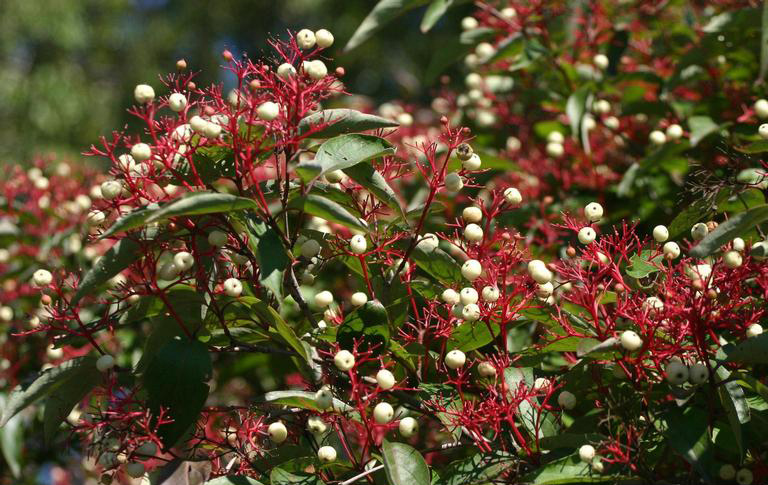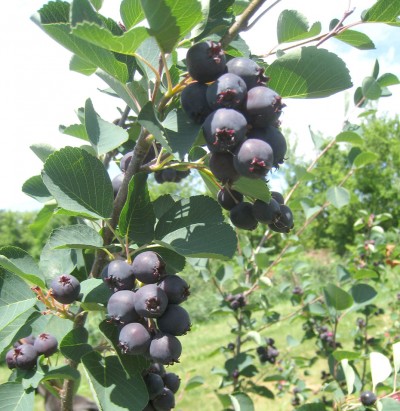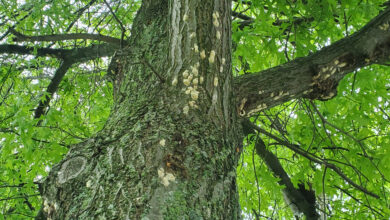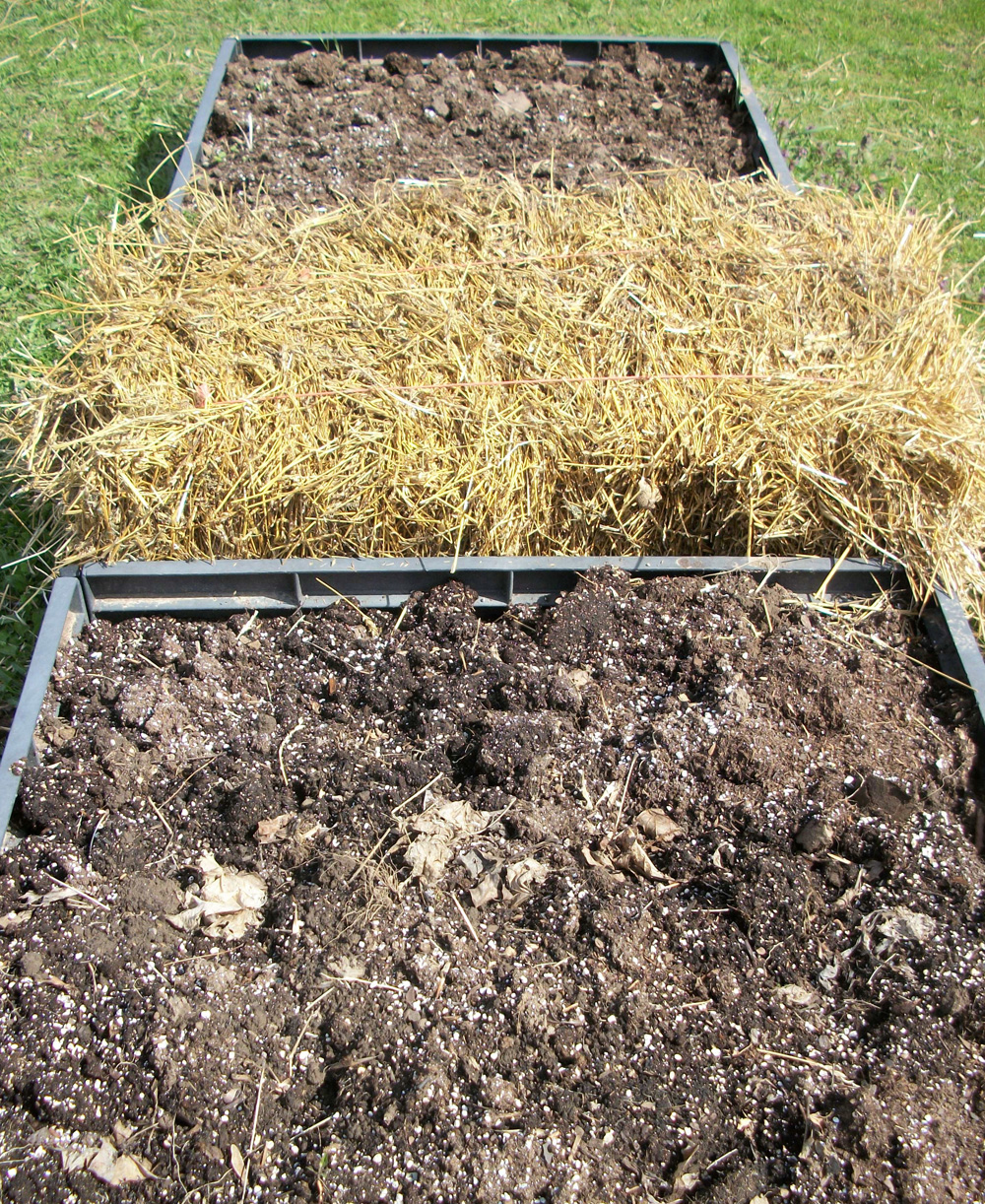Dogwood Shrubs
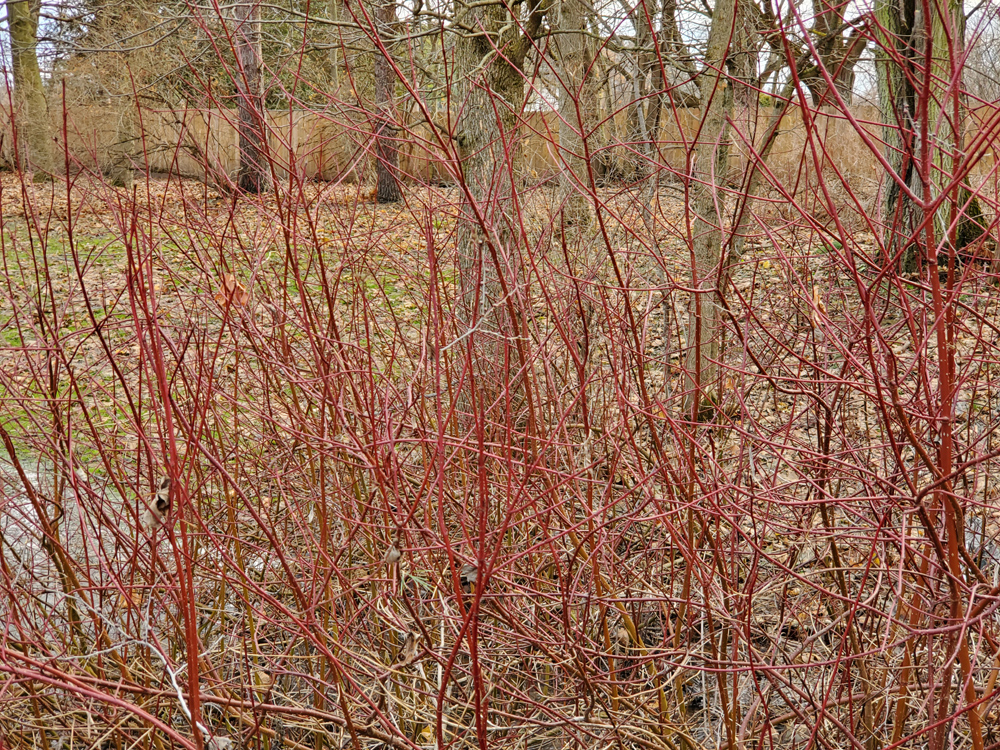
When most of us think of dogwoods, we think of the small flowering trees that bloom in the spring. But there are other dogwood species – shrub dogwoods – that deserve a place in your landscape.
You’ve probably seen shrub dogwoods, like red-osier dogwood, growing freely along local roadsides. Dogwoods are native to our part of North America and they offer four-season interest for home gardeners. The plants bloom in spring, produce fruit and foliage in the summer, sport autumn leaf color as well as beautiful winter bark color and fruit retention.
FYI – Cornus has been split into four genera by taxonomists due to significant genetic differences. Included are Cornus (Cornelian cherries), Benthamidia (big-bracted dogwoods), Swida (white and blue drupe dogwoods – shrub varieties), and Chamaepericlymenum (dwarf dogwoods). As arboretums, gardens, and nurseries update scientific names, Cornus is still widely accepted in horticulture circles.
The silky dogwood (Swida amomum) blooms in late spring and has creamy-white clusters of flowers. It reaches 12 feet tall and 12 feet wide and has a multi-stemmed habit. The berry-like fruits are round white drupes and turn bluish-purple as they ripen. Songbirds and small mammals eat the fruits and the plant also is used as a larval host plant for azure butterflies. Silky dogwoods prefer well-drained, medium to wet acidic soil in partial shade to full sun. You should apply between two to four inches of mulch when planting this dogwood to protect roots from drying out. Silky dogwoods look great in large plantings or as a hedge.
Gray dogwood (Swida racemosa) works well as a hedge, border, erosion control, around ponds and streams, or even in meadows, according to Penn State Extension. You may have noticed this plant along roadsides as younger stems have a reddish tinge and the prominent red fruit pedicels remain throughout the winter. The fruits are white drupes and are an important source of food for a diversity of wildlife including northern bobwhites, woodpeckers, and grosbeaks. Gray dogwood also hosts caterpillars of the spring azure butterfly and is hardy in Zones 4-8. It is tolerant of many soil conditions, from moist and wet to dry, and also grows in both full sun and part shade. This plant can grow up to 27 feet tall and can be trained into a small tree.
Red-osier dogwood (Swida sericea) is a favorite in the landscape for its bright red twigs on multi-stems. I love using cut stems in winter floral arrangements and outdoor container displays. In the spring, I use the cut stems to support small garden plants. The brightest colors are on young stems; pruning back older branches in early spring stimulates new and vigorous growth. As with other dogwood shrubs, red-osier produces white flower clusters that give way to white drupes. Foliage is green in the summer and a reddish-purple in the autumn. Red-osier dogwood stays between six and nine feet in height, but can spread by suckers. Deter spreading with a sharp spade, if desired. These shrubs make great borders and screens. Red-osier likes moist, well-drained soil in partial shade to full sun and is rarely browsed by deer. Wildlife love the white drupes and spring azure butterfly caterpillars eat the leaves for food.
Lastly, bunchberry (Chamaepericlymenum canadense), is more of a ground cover plant, reaching only six to 12 inches in height. The flowers are similar to those of flowering tree dogwoods and bright red drupes hold on into autumn. Birds love them. This dogwood likes dappled sunlight to partial shade and spreads via rhizomes. Plant in cool, damp, acidic soils in Hardiness Zones 2-6.
